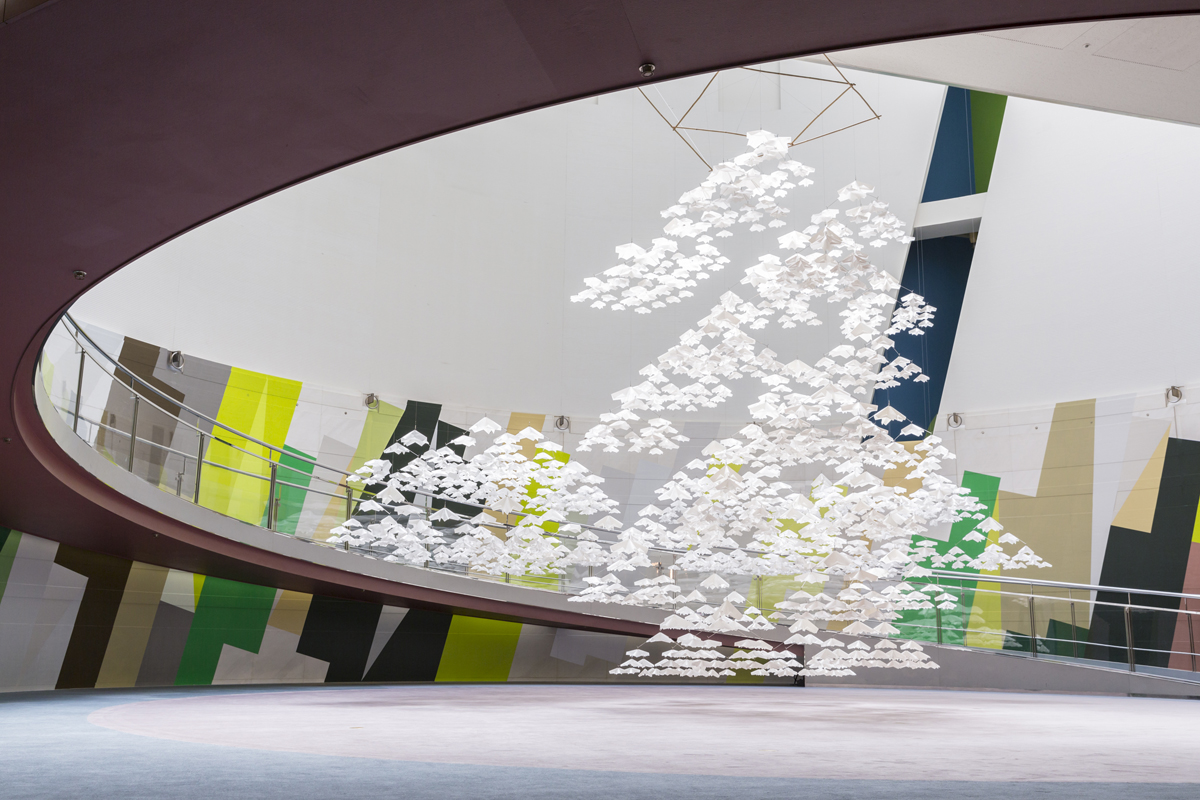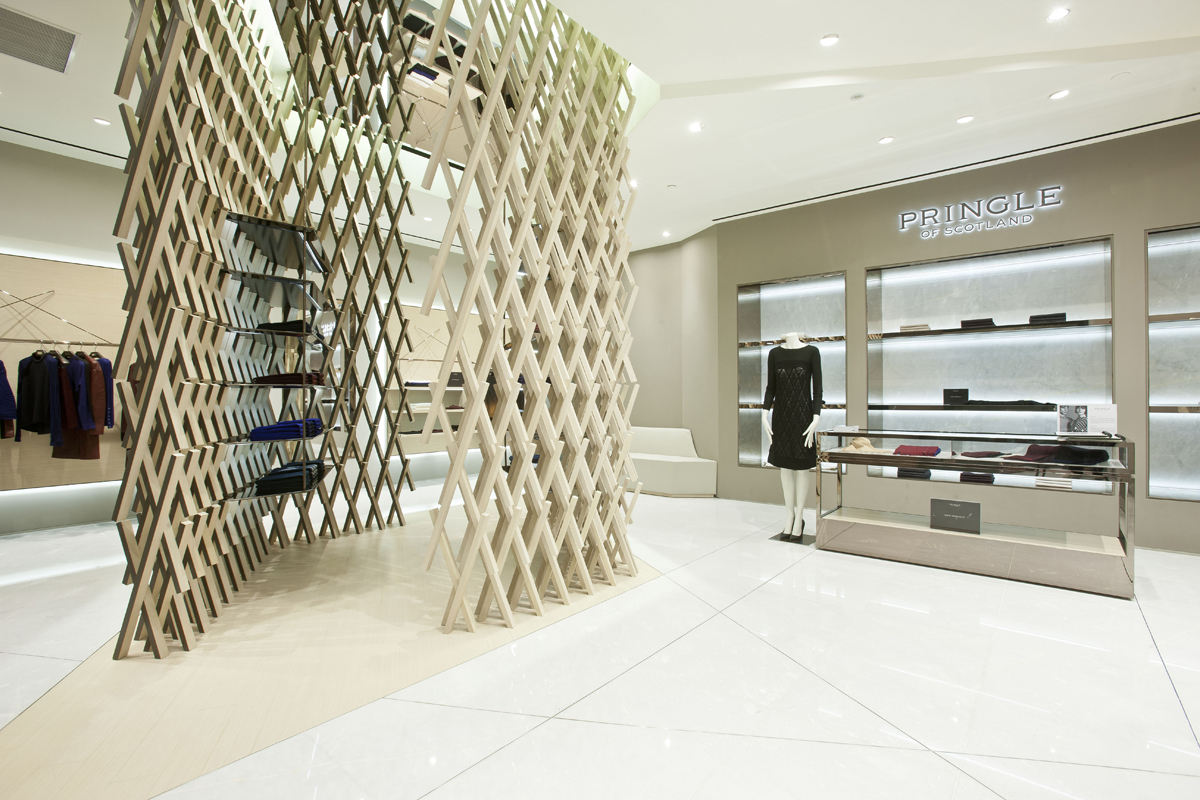Aurel Aebi gave interview about his perspective toward design education, shortly before the BODW 2018 kick off

Aurel Aebi is one of atelier oï’s founders, the Switzerland-based multidisciplinary design studio. Through their design philosophy known as Transdisciplinarty along with their team spirit and unique way of using materials, atelier oï has participated in collaborative projects with international clients from around the world including Artemide, B&B Italia, Bulgari, Foscarini, Louis Vuitton, Moroso, Passoni Nature, Pringle of Scotland, Röthlisberger, USM, Victorinox, and Rimowa.
Aurel Aebi gave interview shortly before the BODW 2018 kick off during the first week of December in Hong Kong, and what impressed and encouraged us to meet him in person at the event was his perspective toward design education. He pointed out that the fundamentals of designing are awareness and the fact that everything around us has been created and designed. This awareness will change the way people see things and, the way people evaluate historical buildings of which a number of monumental works of architecture are gradually being demolished nowadays due to current developments.

Gina Donze: From your point of view as a designer, what is the most sustainable material at present?
Aurel Aebi: In the last few years, countless bamboo projects have been created and shared across the web. This material has an aesthetic quality and it is also sustainable. Bamboo is so popular because it can grow up to four feet a day, it regrows after harvesting and it is two or three times stronger than steel. Bamboo can be used in different disciplines, such as architecture or object design. Maybe in Asia it goes without saying, but as a European, this material does not (yet!) belong to our history or culture. In our office La Neuveville (Switzerland), we have a collection of 20,000 materials. Although new materials are being created, the existing ones are still fascinating. We would love to create a project with bamboo in the near future!
Gina Donze: What are the advantages of working across different cultures?
AA: While crossing different cultures, you get another way of looking at and considering things. It gives you a change of perspective. We generally all look at the same element with different perspectives. When you go out of your own culture and get to know other cultures, you learn from your own. As Nicolas Bouvier wrote: “A trip goes without reasons. It does not take long to prove that it is self-sufficient. You believe you’re making a trip but soon it is the trip that makes you.” Every culture has its own know-how and a material knowledge, we learn from this savior faire to design products. atelier oi has built projects in over 45 countries, and every country has its own legacy and way of looking at the world and working. Everyone has to adapt. Even if you think you know a project, or you know a human being, in truth you don’t. Each human is unique, is its own construction and a mix of influences.

Gina Donze: What is your design philosophy and please talk about the ways in which you work together (Aurel Aebi, Patrick Reymond and Armand Louis).
AA: Teamwork is in the center! At atelier oi, 8 disciplines are represented in a team of 35 employees. atelier oi always works through transdisciplinarity and based on materials and context. atelier oi has a special way to collaborate. We collaborate across and take down ‘walls’ between professional borders in order to work in a transdisciplinary way. Our team of architects, interior architects, scenographers, designers and graphic designers and the collaboration between them, blurs the clear boundaries and hence creates a new type of creativity, as a true team output. Co-creation is necessary as not only design itself is important, but also its content. Design needs content, without content it quickly becomes just a decoration. Ideas should be created in a lively knowledge collective; only as a team do we truly create a powerful design. If we share know-how, it becomes more.
We think with our hands. The beginning of a project is always the material itself, it indicates to us its particularities. For us, “Form Follows Emotion.” Moments and emotions are translated into the design. Amongst the trio of cofounders, we try to create a balance. It is a question of dosage, as for example in medicine: one dosage kills, the other one heals. Our main message is our specific way of working with transdisciplinarity, a fundamental part of our oi DNA. We would like to share the insight of collaborating across professional borders with all its advantages and challenges. We think through disciplines and not within disciplines. We construct stories and content by making stories visible. By including not only the product but the entire set up in our project, we bring life and emotion into a project.
Gina Donze: What is your opinion of the terms, ‘world design trend.’ Is it important to you?
AA: We do not look at trends, because each project has to be considered based on its context. We practice a sense of “Conclusive behaviors.” This means we study the context of the project; each project has a different context. You cannot apply the same recipe to different problems. Each project has its specifications. Success follows if you follow yourself.

Gina Donze: What are you planning to share at the upcoming BODW?
AA: Everything that surrounds us, from a big architecture to a small coffee cup, has been created by a designer. Every designer has to take care. As designers we can create a lot of influence and sustainable living spaces, this makes us responsible for the environment.
Everything that is around us, everything we touch in our daily life, has been created by humans. Today only a small number of things are discussed in a design context. Awareness is focused on a few big brands and the names of the designers and all the rest is no-name design. At atelier oi, we believe that this awareness, the fact that everything around us (things, light, spaces) has been created and designed, should be taught already to small children. If we don’t have this sensibility and awareness it can lead to the look & feel we already have in some cities: big city suburbs that only focus on the number of people that could possibly be packed into buildings. It will lead more to kids spray painting their environments as it isn’t ‘created’ – lacking parks, nature and thoughtfully created surroundings.
If we integrate creation and design from the start, it can change a lot. We have to have a holistic perspective, a holistic approach toward the world; not only our home with our furniture, but the horizon needs to go further. Design creates the culture. Culture forges values. Values define the future. If everything in our environment is created through content, we feel comfortable and the values are protected for the future.
PORTRAIT COURTESY OF JOËL VON ALLMEN

